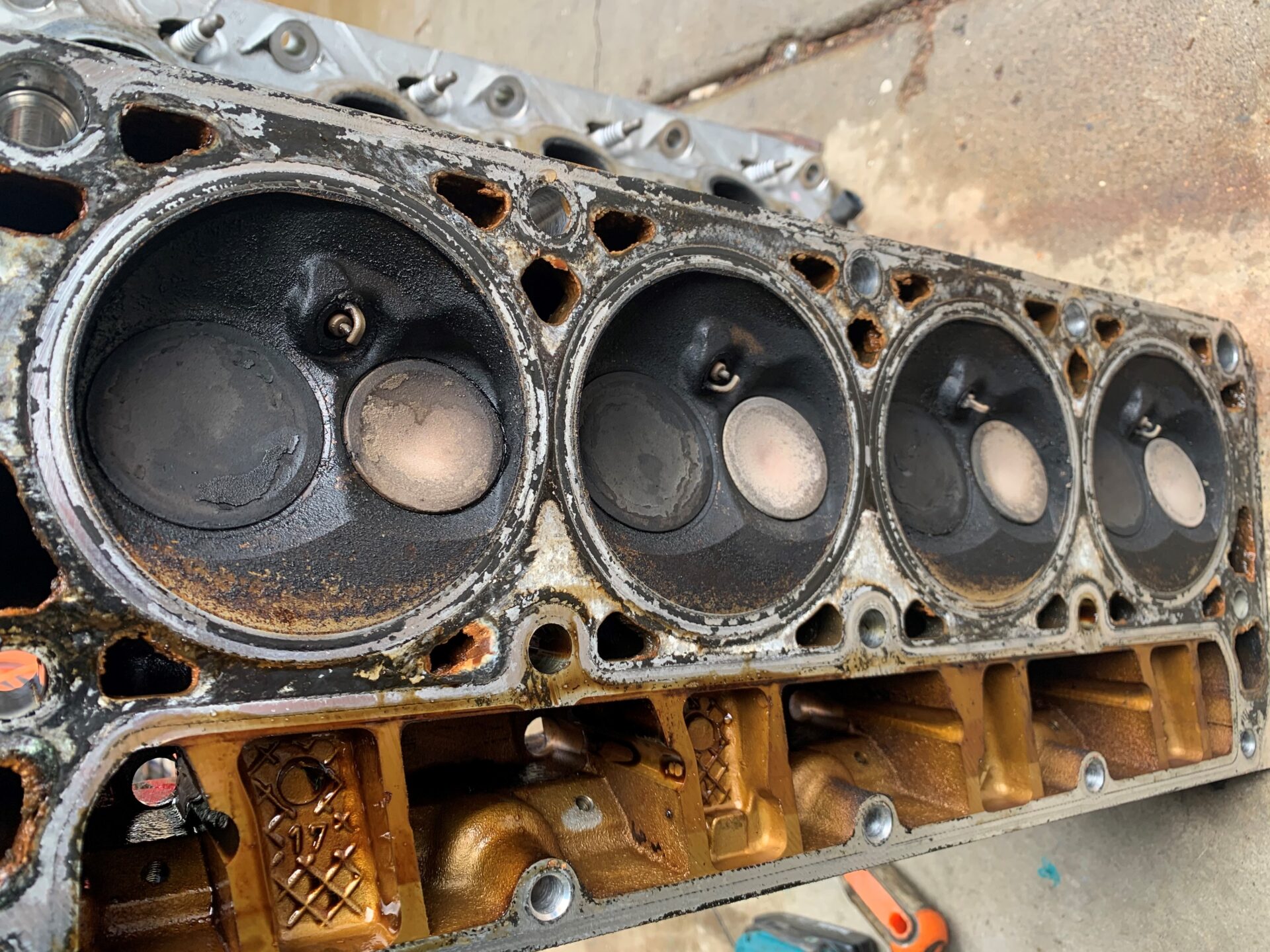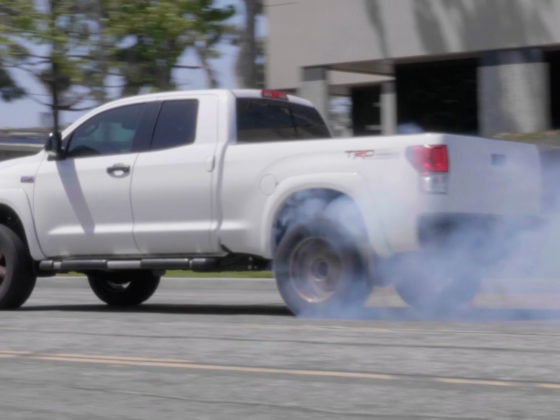Once the engine was all by itself, it was appallingly apparent that this motor was leaking from, well, everywhere. If there’s one thing high-mileage GM cars have in common, it’s the GM Goodwrench Automatic Oil Change Interval ©. Why go through the hassle of draining oil when the engine will just weep it from every seal and force you to replace a quart every 1000 miles or so? Just spin on a new filter every 6 months and keep on trucking. All of these Exxon-Valdez-in-miniature moments meant the only oil/grime-free part of this engine was the top-middle of the intake manifold. Everywhere else was so uniformly black, I was concerned it might be forgotten iron head engine left over from 1999 that GM found and plopped into my Suburban. To assist with cleaning, I did something I don’t recommend for cheap-ass Harbor Freight pressure washer longevity: hot water. Washing machine valves are actually the same as regular hose bib, so it’s as easy as disconnecting the hot water supply hose from the wall, connecting the hose, and running the pressure washer with some Totally Awesome from the dollar store in the reservoir. Since the $79.99 (with coupon) pressure washer’s motor relies on the water to keep it cool, feeding it 130*F water isn’t exactly what it wants. Meh.

Now that we can actually see the motor (which has aluminum 706 casting cathedral port heads), what horrors await inside an indifferently-maintained 200k mile LM7? Surprisingly, not much, but you should do yourself the favor of at least disassembling to a short block and refreshing prior to installing in your vehicle. GM’s Gen III family of small-blocks are simple and reliable, but this simplicity and easier of manufacture means they share a number of common faults that can bite you in the ass later on.
First things first: even if you’re not going to tear the motor apart and replace items, do yourself the favor of removing the intake manifold, clean the smegma off the valley cover, and replace the knock sensors. The wiring fails. The sensors fail. It all fails and it’s a tremendous pain in the ass to replace them in the vehicle. Rip them out and replace them. Replace the impossible to access camshaft position sensor and oil pressure sensor on the back of the block while you’re there.


Most of what ails a Gen III small block relates to the very thing that makes it such a good candidate for motor swapping: the valvetrain. There’s a distinct tradeoff between an overhead cam engine and a pushrod engine. Pushrods get you packaging efficiency, but the remote-operated valvetrain has additional parts that see stress and need optimal operating conditions for long life. Given the oil leaks on the outside, it wasn’t surprising that there were some signs of neglect inside. Longish oil change intervals clogged up the internal passages of the pushrods, which are used to carry oil up to the rockers. As a result, many of the rockers ran dryer than GM intended and saw rather advanced wear.





4 comments
Legality is so overrated.
Pretty much. From James Madison:
The internal effects of a mutable policy are still more calamitous. It poisons the blessings of liberty itself. It will be of little avail to the people, that the laws are made by men of their own choice, if the laws be so voluminous that they cannot be read, or so incoherent that they cannot be understood: if they be repealed or revised before they are promulgated, or undergo such incessant changes, that no man who knows what the law is to-day, can guess what it will be to-morrow.
Very entertaining read. Looking forward to the next update!
Very interested in the project. Hoping to do the same thing in my 2000 Discovery some time over the next year or 2. Fortunately, I don’t have any emissions requirements.